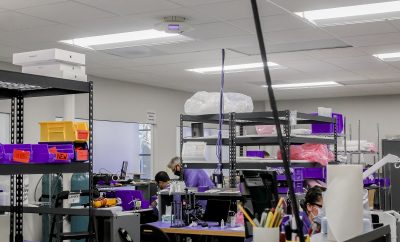News
San Diego Piloting Wastewater Testing as Path to Re-Open Schools
There is a furious debate between health officials, parents, educators, and staff as to how to safely get kids back to in-person learning. There is no right answer to when and how to get children into the classroom safely, but the county is exploring more options to aide in the transition.
Working with UC San Diego, the County of San Diego is working on a pilot program that involves testing waste water at schools and child care sites. The Safer at School Early Alert system, or “Sassy” as it is called by participants, is an evidence-based program to detect SARS-CoV-2.
The project began with technology launched as part of UC San Diego’s “Return to Learn” program which collects daily wastewater samples that are tested for shed coronavirus. The system has successfully detected COVID infections in campus housing through wastewater, thereby alerting anyone on campus who may have used the facilities. This can be the first sign of an infection, and is a great early indicator for people who may be pre-symptomatic or asymptomatic.
Safer at School Early Alert has been piloted in 10 schools and two child care centers over the last four months. The focus has been communities at highest risk for COVID-19 including San Ysidro, Chula Vista, El Cajon, Southeastern San Diego and Vista.
Through daily wastewater and surface monitoring, the Safer at School Early Alert tests for the presence of particles of the coronavirus and is combined with a responsive testing strategy. The goal is to quickly identify children or staff members who are infected with COVID-19 before an outbreak occurs.
The three elements of the pilot are using a robot in a sewage outlet to collect daily wastewater samples that are tested at UC San Diego School of Medicine, daily swabbing of floors for virus particles that have settled and a no-cost PCR testing program. Child care sites also send used diapers to test fecal samples in children who are not yet potty-trained.
“We know that through the pandemic, the educational gap has grown wider – often in our communities hardest hit by the pandemic,” said County Board of Supervisors Chair Nathan Fletcher. “In my discussions with UCSD researchers and my COVID-19 Scientific Advisory Group, it became clear that there were lower-cost alternatives to regular testing that would allow for some of those most impacted students to return to school safely. Through this pilot and funding through the federal CARES Act appropriated by the Board, we have been able to test out new testing options. It is my hope that we could scale up this program.”
A second step includes daily surface monitoring. Teachers or staff use a swab to sample a one-square-foot section of the center of the floor in a classroom, which is where aerosols tend to settle. These samples are tested daily at UC San Diego lab.
Testing children and staff at each location is the third part of the detection program. Children and staff who voluntarily consent undergo free PCR COVID-19 testing at their school or child care center in response to a positive result from wastewater or surface monitoring.
“The safe reopening of schools remains a priority for the County of San Diego,” said Wilma J. Wooten, M.D., M.P.H., County public health officer. “What UC San Diego has demonstrated with the Safer at School Early Alert pilot program models the types of steps that can help us ease back into classroom education while continuing to fight the virus.”




0 comments